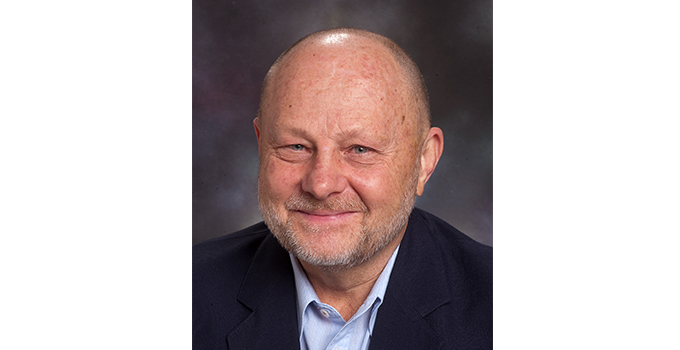Elmars Krausz: Doing it for the love of science

“I’ve had fun.”
When asked why he’s stayed with the Research School of Chemistry for so long, that is the first thought that comes to Professor Elmars Krausz.
“I seem to have the title professor, but do I profess?,” Elmars asks. “I’d say, maybe not, I could be better described as an amateur. An amateur, from the French amour, is more somebody who loves something.”
When Elmars completed his PhD at the University of Sydney in 1971, his supervisor, Dr. Jim Ferguson suggested he come to the new Research School of Chemistry, located at the Australian National University in Canberra.
“Jim suggested I come to the ANU as a postdoc,” Elmars explains. “I did have a successful couple of years at the RSC which was from 1971 to 1973. That also means I've had contact with the school almost from its inception.”
Following his first post Elmars spent some years traveling overseas, before finally returning to Australia and ultimately staying at the School for good.
“After my first postdoc at ANU, I went to do a postdoc in Oxford and also one in USA. After travelling in South America and across the Pacific in the second half of 1977, I truly was at a loose end with no particular career plans. Being a hobo lets you see things in a different light.
“I came to see Jim in Canberra, and he told me there was a temporary lectureship at the Faculty of Chemistry. This was in January 1978 and a week after I spoke to Jim, I was appointed. Sometimes you do need luck.”
“For the next couple of years I took up a Tutorship at the University of Sydney so that I could spend time with my mother who was dying of cancer. In 1981 Jim asked me to come back to the RSC as a senior postdoc and he then generously allowed me to do whatever I wanted. I have been here ever since.”
Elmars has retained his focus on the passion that began from the start of his PhD –Spectroscopy of the condensed phase. The colour of chemicals.
“I've analysed spectra, developed new spectroscopic theories and invented new spectrometers over my scientific career,” he explains. “In the beginning it was looking at simpler things like at ions in solids, the small amount of chromium in aluminium oxide which makes ruby red. Then studying more detailed features associated with the magnetic coupling between metal ions, which change their colour. This phenomenon has, amazingly enough, key relevance to our most recent studies of the process by which nature splits water into hydrogen and oxygen via the notorious manganese catalytic cluster in photosynthesis.”
“Then I went on to look at other magnetic materials, magnetic interactions, charge transfer states, and the chemistry involved in charge transfer processes. I looked for a long time at the watershed material in inorganic chemistry called ‘ruthenium-tris-bipy’ and its variants. We did a lot of great spectroscopy on that system using high resolution lasers, looking at how the charge transfer states in this system are active and why there're so powerful in what they can do.”
Over that time Elmars has witnessed great change at the School.
“The RSC has changed dramatically since my early days. I do hold those early days in the fondest memory.”
Even though he’s formally retired, Elmars still comes in every day, driven by the passion that has kept him going for five decades. He did his BSc honours in 1967, starting his career in research. So it is a 50th anniversary for him this year, parallel with the opening of the RSC.
“What I'm investigating now is a culmination of everything I've learnt in my scientific life,” Elmars explains. “For the last decade or more I've been working on fundamental processes in photosynthesis. I’m looking at how photosynthetic processes can be understood and used in artificial photosynthesis, which is the matter of storing energy in a chemical form.
“So that's my enthusiasm; to look towards these fundamental processes, to what is not yet understood about those processes, and to what my experience and skills can contribute. We look to actually guiding the process of building better catalysts to be able to store chemical energy there and avoid the process of burning fossil fuels, which really needs to STOP.”
Elmars continues to live by engaging in that which he loves to do.
“The plan is for me to contribute to the new group at the RSC being lead by Nick Cox, an RSC graduate himself. When I can no longer contribute usefully there, the plan is to slope off into the sunset and hopefully have more fun; maybe in a different way.
“One key for me in enabling this fun to happen is to habitually grasp each opportunity, large and small; to take my failures, take my successes, take my luck both good and bad. And know that I have everything it takes to make it happen.
“I have also learned that it does take all you have, not a fraction less. Persistence and focus draws out the adventure, the never ending story, in a magical way.”
